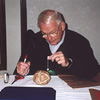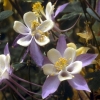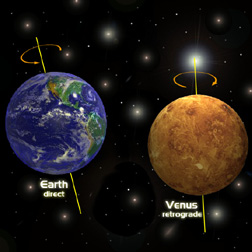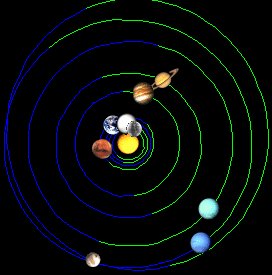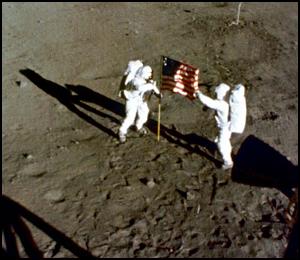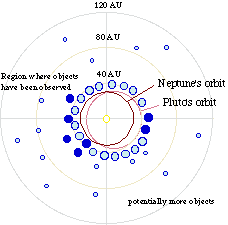Why does the Moon have an orange color in the Fall?
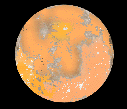
The moon is orange in the fall, because it's celebrating Halloween! Just Kidding! Actually, the moon can have an orange color at any time of the year. As a matter of fact, just last month (December 1997) in Michigan, there were a few nights when the moon appeared large and orange.
The reason for the orange color is due to the scattering of light by the atmosphere. When the moon is near the horizon, the moonlight has to pass through much more atmosphere than when the moon is directly overhead. By the time the moonlight reaches your eyes, most of the shorter waves (green, blue, violet) of visible light have been scattered away by air molecules. You only see the longer wavelength of yellow, orange, or red.
Sometimes the moon appears orange even when it's directly overhead. This occurs when there's a lot of dust, smoke, or pollution in the atmosphere. The size of those particles will determine the type of color you will see. Sometimes the moon will look red, orange...even blue.
On September 26, 1950, several people in England witnessed the appearance of a blue moon. Witnesses stated that the moon was a bright electric blue and many foresaw it as an omen of impending doom. During that same period, several forest fires were burning in Canada. The soot and ash from the fires put a lot of large dust particles in the atmosphere which were blown over to England by winds. These particles scattered the moonlight as it passed through the atmosphere, causing the moon to appear blue.
It seems like the moon appears in certain colors during certain times of the year. For instance, the Harvest moon during the fall appears very large and orange. There are two reasons for this: the moon's path across the sky, and the climate of earth. During certain times of the year, the moon will rise and set at different angles. Sometimes the moon stays really low in the sky and never reaches an overhead position. The earth's atmosphere also goes through certain changes at certain times of the year. In some months, the atmosphere has more dust particles than usual; in other months, the atmosphere contains a lot more cloud particles than usual. Extra particles in the atmosphere mean more scattering of light.
In the fall, many farmers are harvesting their crops. The soil from the crops gets disturbed and a large amount of dust ends up in the atmosphere. At the same time, the moon is lower in the sky during the fall season. So if there's more dust in the sky and the moon is closer to the horizon, then what color will the moon be? Orange or red! That's where "Harvest Moon" gets its name.
Pollution in the atmosphere can cause the same distortion of color. If
you live in Los Angeles (which has a lot of pollution), for example, the
moon will constantly appear in color. If the pollution is really thick,
you might not be able to see the moon at all!
Submitted by Patrick (South Dakota, USA)
(January 9, 1998)


